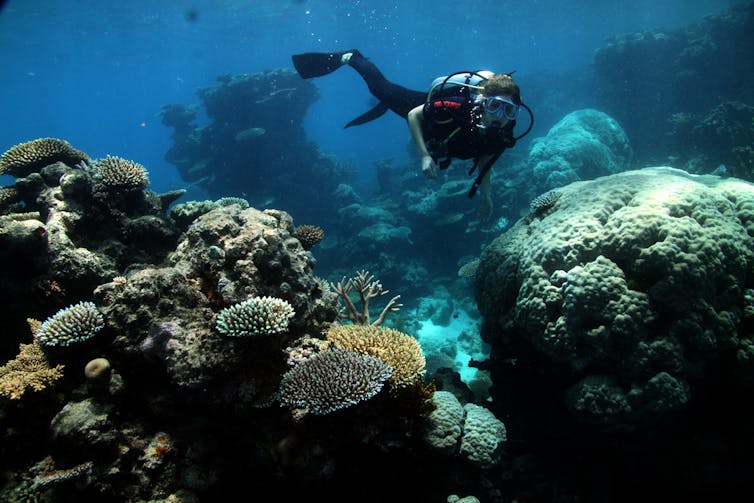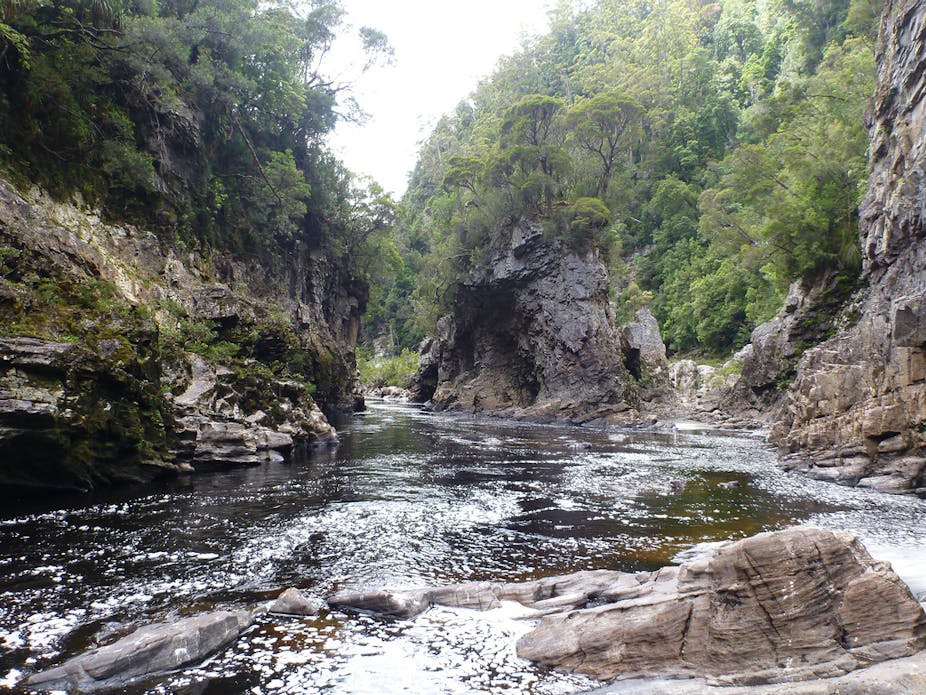Following the defeat of Malcolm Fraser’s government in 1983, the Hawke government’s first move was to pass the World Heritage Properties Conservation Act, giving itself the legal power to stop the World Heritage-listed Franklin River in Tasmania from being dammed.
Symbolically and practically, Labor rewarded the environment movement which had campaigned for its victory. Malcolm Fraser had refused to intervene because of his support for “States’ rights” and was left stranded on the wrong side of history.
Public awareness of Fraser’s environmental contribution often goes no further than his failure to save the Franklin. Yet his record ultimately shows him to have had a strong and progressive commitment to environmental protection overall.
Maintaining Labor’s advances
With the Constitution almost silent on who should take responsibility for the environment, during the 1970s and ‘80s this policy domain was increasingly dominated by tensions and conflicts between State and successive federal governments.
These tensions came to a head in 1974, when the Whitlam government failed to intervene to stop the flooding of Lake Pedder by the Tasmanian Hydro Electricity Commission. Later, despite his government having nominated the Franklin for World Heritage protection, a similar failure would cost Fraser dearly.
In 1975 the incoming Fraser government inherited the results of a flurry of institutional innovations by the Whitlam Labor government. Driven by Environment Minister, Moss Cass, Labor had begun to shape the Commonwealth into a significant player in national environmental affairs.
Labor created a stand-alone environment department, the Australian Heritage Commission (now the Council) which advises on world and national heritage such as the Great Barrier Reef, and a national parks advisory body. It legislated to create national powers for environmental impact assessment and also, critically, recognised land rights.
Fraser maintained these advances – although some were at times threatened and their budgets cut - and this in itself stands in powerful contrast to the destructive approach taken by the Abbott government to its predecessor’s policy initiatives to combat climate change.
More steps forward
Then, under the Fraser government, Australia signed the Ramsar Convention on wetlands (sites listed under the Fraser Government include Stage 1 of Kakadu National Park, and the Barmah Forest in Victoria), the Convention on International Trade in Endangered Species (which prevents trade in such species or their 'products’, such as ivory), the Convention for Conservation of Antarctic Seals, and the Japan Australia Migratory Birds Agreement.
The Fraser government also instituted the inquiry which led to Australia’s ban on whaling. It achieved World Heritage listing for Fraser Island and stopped sand mining there in the face of trenchant opposition from the Queensland government under Joh Bjelke Petersen. It also achieved World Heritage listing for Kakadu, the Wilandra Lakes, Tasmanian Wilderness, and the Great Barrier Reef, and established the Great Barrier Reef Marine Park, protecting it from oil drilling. Each was a major environmental achievement.

More controversially, the Fraser government also enabled uranium mining - which posed a significant threat to the environment of the Kakadu region - to proceed in the Northern Territory, then under Commonwealth control, despite public and Indigenous opposition and bitter protests by the anti-uranium and environment movements. (Fraser himself supported uranium mining as a measure of balanced progress – as had most of Labor under Whitlam.)
A national environment strategy
Fraser’s environmental commitment was personal, not just political. He was a founding member of the Australian Conservation Foundation in 1965. Later, having lost patience with a radicalised ACF, he invited the international organisation World Wide Fund for Nature (WWF) to establish itself in Australia as its counterbalance.
As early as 1969 Fraser, as minister for education and science, suggested - in highly qualified terms - his desire to advance a national environmental policy and, specifically, to defend the then recently confirmed Commonwealth power over the States in its areas of territorial responsibility (for instance, to protect the Great Barrier Reef).
However Fraser’s support for co-operative federalism and the pre-eminent role of the states in resource and environmental management, and his reluctance to use the Commonwealth’s external affairs powers, prevailed throughout his time in office. This was most obvious in the case of the case of the Franklin Dam.
In 1980 Fraser launched the World Conservation Strategy in Australia and, using this as a template, announced plans for a National Conservation Strategy of Australia (NCSA). This strategy was Australia’s first attempt to formulate a nationally integrated strategic approach to environment policy rather than an attempt at conflict resolution or to regain national control of the environmental agenda, as the Hawke government would try to do with its National Ecologically Sustainable Development Strategy process a decade later.
The battle for the Franklin
In environmental terms, the last year of his Prime Ministership was overshadowed by the battle for the Franklin. Fraser comments, in his memoir, that he saw it as a “straight out conflict”.
We had signed the (World Heritage) convention and forwarded the nomination. I had made sure it was forwarded, despite (then Tasmanian Premier Robin) Gray not wanting me to do it. We had international duties. But I have always been against the use of the external affairs power to override the states.
Fraser and his cabinet were advised that the Commonwealth had the power to stop the dam but, as his biographer, Margaret Simons notes, he did not then want that power tested.
However later, reflecting in his memoirs on the outcome, his view shifted. It was
a mistake to argue points of constitutional law when the majority of the population clearly wants the federal government to act, and I accept that was the case with the Franklin. I think if I had my time again, I would use the federal power, just accepting the politics of it, the will of the majority.
With the Franklin River, Fraser had the misfortune to be a conservative caught in the slow lane on the wrong side of national politics. He was out of step at a moment when environmental issues were being increasingly understood to be global, with responsibilities and consequences running beyond the bounds of rapacious states, and accompanied by the rapid growth of international environmental treaties transforming the notion of national sovereignty.
Issues like ozone depletion and climate change would emerge only a few years later, demanding national coordination to achieve meaningful contributions to counter these global threats.
Fraser’s concerns about another global issue, the threat of nuclear war and nuclear proliferation, grew ever stronger over time. This shift suggests that, given his environmental commitment and his reconsideration of his position on the Franklin, it is likely that - had he been in office at that later time - Fraser most likely would have provided the deep foundation in conservative politics for strong environmental action of the sort that Australia has yet to achieve.

